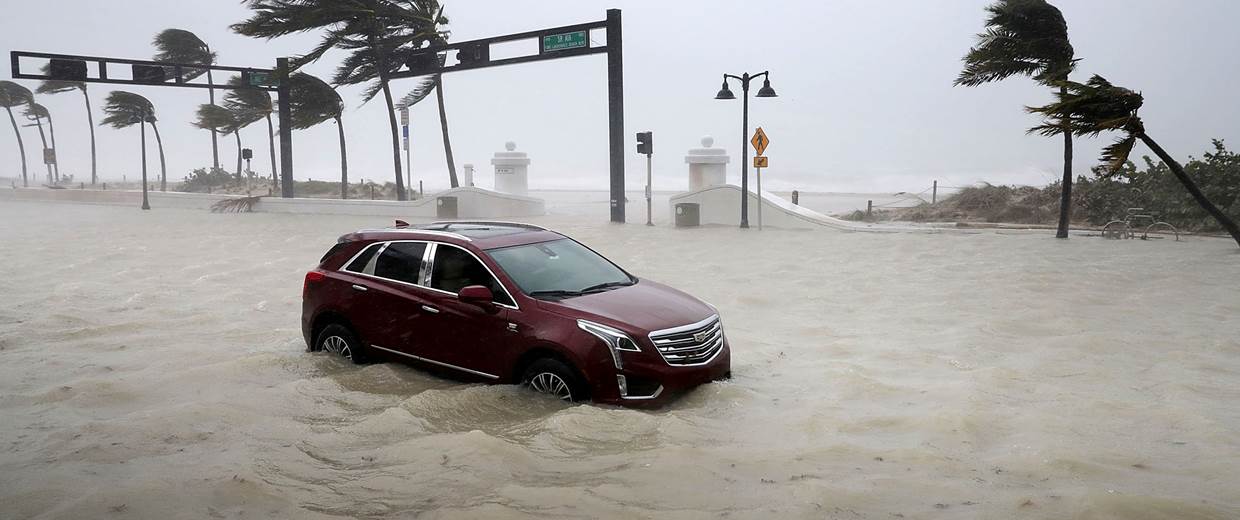
The winds have died and the mopping up has begun. Businesses are reopening as people head back to work while dealing, at least for now, with their new realities.
I know people whose homes were badly damaged by this storm, while others – myself luckily included – had only minor inconveniences. No matter whether Irma dealt you a mighty blow or a glancing scratch, we’re all in this together.
That’s why the most important questions in Irma’s wake is what we learned about the experience, and whether those lessons will stay with us as we go forward into what seems increasingly to be an era of super storms.
They had better.
HAVE A PLAN: You know all those TV people who start preaching in June about the necessity of having a hurricane plan? Maybe everyone ought to listen.
When the news of Irma’s impending arrival became real, there was a rush on water, batteries, flashlights, and necessities like canned goods. Those things are a lot more available in June than they are 48 hours before a Category 5 hurricane is predicted to strike.
Water doesn’t spoil.
If you have bought supplies in the past, you might want to update the inventory. On Saturday, after shelves had been cleared out and stores started to close, we confidently pulled out the giant plastic container that kept the supply of size “C” and “D” batteries. They were right where we left them.
They also had expired in 2011.
CUT FORECASTERS A BREAK: I actually heard some people complain weather forecasters were totally wrong on this one because Irma didn’t follow the initial projected paths. That’s crazy.
They routinely warned viewers that even the slightest change in conditions could send the hurricane off in many directions. They emphasized everyone was in danger, and everyone had to prepare like they were going to be directly in the damage path.
Even with the advanced and other equipment, plotting an exact course of these storms can be an inexact science. They get it right more often than not, though.
I remember hearing Steve Jerve of WFLA-TV in Tampa say last Friday that the eye of Irma likely would pass just east of the city, which is exactly what it did.
SHELTER FROM THE STORM: People seem to have this one down. Shelters filled early as people wisely took no chances, Hillsborough County had to open more.
I wonder, though, if the story would have been the same had Irma stayed on the original east-coast track. Given the size of the storm, that could have been catastrophic here. Some people in Miami probably thought they were safe when Irma moved west.
How did that work out?
A POLITICAL MODEL: Future leaders take note: Gov. Rick Scott again provided a blueprint for how someone in his position is supposed to lead during a threat like this.
Like last year with Hurricane Matthew, Scott was here, there and everywhere, sounding the warning early, often and loudly.
As someone noted, when you see Rick Scott wearing the Navy ballcap, you know it’s getting real.
Tampa Mayor Bob Buckhorn was all over TV, radio and Twitter with similar warnings. He gets the quote of the week with his one about how after 90 years of avoiding, Tampa was about to “get punched in the mouth.”
DO YOUR HOMEWORK: Remember the lessons from this adventure because there will be a test. Just look at 2004 after Hurricane Charley left devastation in its path. Three more storms followed.
Wanna bet this won’t happen again?
I don’t.




One comment
David Bruderly PE
September 13, 2017 at 9:14 am
Gov. Scott, Jax Mayor Curry and the Florida GOP Congressional delegation has now experienced the impacts of a tropical storm powered by enhanced warming of ocean waters from the greenhouse effect; to their credit these GOP politicians acted on short-term warnings provided by scientists using data and computer models. As part of their recovery plan, these Republican leaders should vow to now heed the warnings of climate scientists who are using the same data and computer models to provide warnings about the longer-term impacts of a warmer global ocean, especially warming in the polar and tropical latitudes. Irma and Harvey provide empirical evidence that governance MUST be based on science-based analysis of facts rather than anti-government ideology, anti-science rhetoric and the short-term demands of short-sighted donors.
Comments are closed.